MLB Team X-Factors for 2017, Part II: AL Central

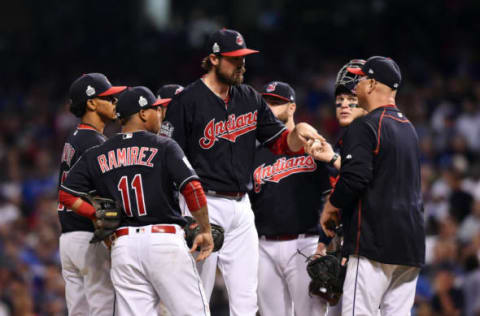
We now stand less than three weeks away from Opening Day. Less than three weeks until you call out sick on that first glorious Monday to watch baseball from 1 p.m. to 1 a.m. (or 10 a.m. until 10 p.m. if you’re one of those lucky West Coasters).
On Tuesday, we began this journey by looking at the 2017 x-factors for the American League East. We named a closer looking to repeat history (or come close to it), a big bat that will need to fill a Papi-sized hole, a 6’7″ behemoth with a 44 percent strikeout rate, a Colorado transplant and an oft-injured middle infielder.
Today we will look at the AL Central. This division has sent the AL representative to the World Series in each of the past three seasons and four of the past five. It is a division with star power and star prospects. It is also a division I could see going one of 100 different ways. A lot of what determines those 100 different ways will be the production of these next five guys.
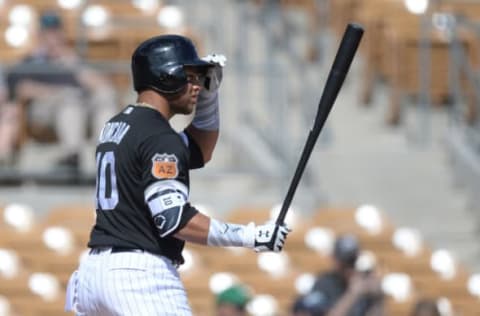
Chicago White Sox – Yoan Moncada
The White Sox are an interesting team in 2017. There is a possible timeline in which the White Sox crash and burn early in the season, and they head into the trade deadline looking to sell. In this scenario, established veterans like Jose Quintana, David Robertson and Todd Frazier might be the most important (or most x-factor-y) players on the team. The potential return (in future assets) that the White Sox could get for those three would likely be the most important part of 2017, if the season is indeed a lost cause.
There is another very distinct timeline – one that I am far more of a believer in than some other pundits – in which the White Sox start the season at a far better clip than expected and are in contention at the trade deadline. In that case, the team will (likely) avoid selling off a few key pieces and may instead be looking to call up a few key youngsters instead. In the White Sox system there is no youngster more key than Yoan Moncada. The 6’2” Cuban is a consensus top-two prospect in all of baseball, and most folks would agree he is the top prospect likely to begin the season in the minors (only Andrew Benintendi is ever really listed above Moncada). Moncada slashed .277/.379/.531 in 45 games at Triple-A in 2016, and he has shown five-tool ability at each step along the way in his minor-league career.
Some folks have posited that the White Sox’s move to cut Brett Lawrie was a sign of intent when it comes to calling up Moncada sooner than later, but it would still be a shock to see Moncada in the majors to start the season. However, having Moncada come up as a mid-season addition only helps in his “x-factor” ceiling for the purposes of this article. If the Sox can linger in the playoff picture long enough to call up Moncada in mid-to-late July, he could well be the piece to put them over the edge. Even if his call-up ends up being a September call-up when the Sox’s season is officially laid to rest, Sox fans will be watching that month-long debut as hard as anything else in 2017.

Cleveland Indians – Yan Gomes
Yan Gomes really represents the Cleveland catcher position as a whole. As any Cleveland fan (and really any tuned-in baseball fan) knows, the catcher position for Cleveland in 2016 was a black hole. By all available metrics, Cleveland had the worst catchers in the league last season. They posted a combined -0.7 fWAR (30th in MLB), .244 wOBA (30th in MLB) and 44 (!!!) wRC+ (30th in MLB). It’s hard to do worse than that. The team’s wRC+ of 44 was by far the worst for any one position on any one team in 2016, and the fourth-worst of any group of catchers for a single team this millennium.
Gomes was a large factor in that failure to produce offensively, as he slashed .167/.201/.327 in 264 plate appearances last season. Gomes was struggling so mightily at one point that the team performed a sacrifice to “Jobu” (a reference to the movie Major League) in order to get him out of an 0-for-27 slump. For a minute, it appeared as though the sacrifice had actually worked, as Gomes broke his slump with a double. Of course, he also dislocated his right shoulder later in the same game, costing him 68 games from July 17 to Sept. 30.
During their 2016 playoff run, Cleveland relied more on Roberto Perez (he of the .183/.285/.294 slash line in 2016) than Gomes, but Terry Francona has already named Gomes (the more established of the two) as the starting catcher for 2017. Gomes has, at times in his career, looked like a legitimate big league catcher. From 2013-2014, he posted an OPS+ of 122 with 8.1 bWAR over 223 games. It’s been all injuries and incompetence since, however, and 2017 will probably be the last shot Gomes gets. If Gomes is able to turn things around, a scary lineup gets even scarier. If he isn’t able to turn things around, Cleveland merely look like the second or third-best team in the American League.
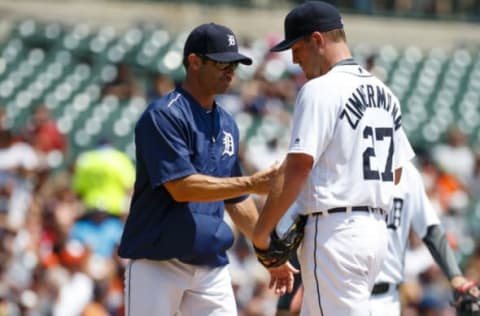
Detroit Tigers – Jordan Zimmermann
If it wasn’t the biggest cop-out ever, I was going to list Ilitch Holdings as the biggest x-factor for 2017. With the passing of longtime Tigers owner Mike Ilitch this past December, the club may well have a very different vibe this year. To be callous, Ilitch knew that he was going to pass away at some point soon, and he was running the team in a very win-now manner during his final years. (This makes total sense by the way, and I definitely would have done the same.) With Ilitch – and his hardline mission to win a Tigers championship for Detroit before he passed away – now gone, Detroit may well see a decrease in some of the bigger salaries that have been handed out in recent years and maybe even see a few of those guys traded.
One of those big salaries is the guy who I “settled” on for the Tigers’ 2017 x-factor. After the 2015 season, Jordan Zimmermann was handed a five-year, $110 million contract. Zimmermann was fresh off a five-year stretch in which he made 155 starts (at least 26 every season and four straight of at least 32 starts) with a 3.14 ERA. In his first year in Detroit, Zimmermann missed over a dozen starts and had a 4.87 ERA in the 18 starts that he did make. His strikeout rate – which had never been elite (7.4 career K/9 before 2016) – plummeted to 5.6 K/9 in a season in which strikeout rates were higher than ever at a league-wide level. Zimmermann ended the season with a 9-7 record, but it was a far cry from the dream debut season. Those 0.2 bWAR seasons are typically what you dread on the back-end of a five-year, $100+ million deal, not the first season.
The good news for Zimmermann is he has four more years in Detroit to make up for 2016! The less sarcastic good news for Zimmermann is that there were some definite tough breaks that cost him in 2016. First and foremost, a typically healthy pitcher suffered his worst season of injury of his career. His worst month, June, was one in which he pitched through injury the whole time, and it clearly affected him. He wasn’t the same in his final four starts of the year, either. If we just look at how he was pitching prior to June, Zimmermann was in line with previous seasons. If he can stay healthy in 2017, there’s good reason to believe Zimmermann won’t be nearly the train wreck he was in 2016, which could be great news for a Tigers team on their last stand.
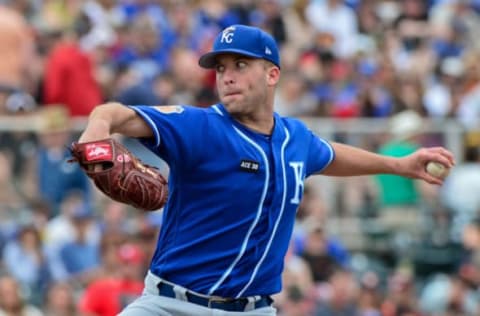
Kansas City Royals – Danny Duffy
Last year was a bit of a down year for the Royals’ offense, but with the addition of Jorge Soler, Brandon Moss and a return to health (hopefully) from Alex Gordon, they should bounce back to around league average.
The pitching staff, on the other hand, holds plenty of question marks. The saddest of those question marks is the hole in the projected “ace” spot left by Yordano Ventura. Ventura never put up the best numbers, but he had the hutzpah and aggression to fill the clubhouse “ace” role, even if us pointy-headed baseball writers refused to call him an ace. With Ventura’s passing, the role of “ace” will fall to Danny Duffy. It may seem silly and out of date to say a team like Kansas City needs an “ace,” but if there is a clubhouse that defines “silly and out of date,” it’s the Royals. This is a team managed by Ned Yost and led by Eric Hosmer on the offensive side of things – they need a dude they trust to be their “ace.”
In 2016, Duffy checked all the requisite on-field boxes for being an ace. (I’ll stop putting the condescending quotation marks around ace.) He went 12-3 (classic ace record) with a 3.51 ERA. He also flashed his sky-high ceiling with an eight-inning, one-hit, 16-strikeout masterpiece against Tampa Bay on Aug. 1. The improvements Duffy made came in his fastball velocity and his ability to attack early in the count. As Fangraphs’ Eno Sarris writes of Duffy:
Duffy went to the bullpen and found some velocity there that stuck in a return to the rotation, but that’s not the only thing the Royals lefty discovered. He found the confidence to throw the ball in the zone with his nastier stuff as well, resulting in a career-high zone percentage… But it’s important to remember that he’s always had this stuff, and that we always wondered why he didn’t get better results.
That last sentence is key when setting the bar for Duffy in 2017. Although he’ll be the nominal ace for the club, will he be able to perform like one on the field? It may well be the difference for the club in 2017.
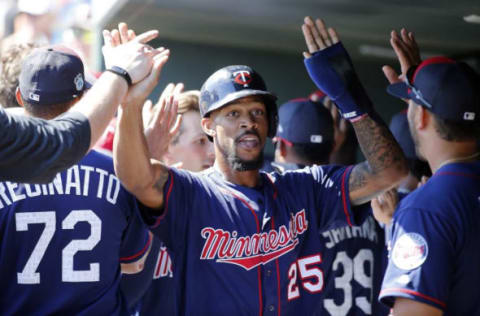
Minnesota Twins – Byron Buxton
Byron Buxton is not only the biggest x-factor for the Twins in 2017, he’s the biggest x-factor for the next 15 years of the franchise. The former no. 2 overall pick (2012) and former no. 1 overall prospect in baseball (2013), the time is now for the 6’2” center fielder from Baxley, GA.
Buxton made his debut in 2015, a 46-game debut in which he slashed just .209/.250/.326 but still had a positive net value thanks to his strong defense in center. In 2016, Buxton started the season at the big-league level, but he was hitting just .156 by April 24, when the team sent him to the minors for the first of several yo-yoing trips between the majors and minors. Buxton never seemed to get a feel for the bigs, in part because of the perpetual threat of being sent back to the minors. When he was finally called up to the big leagues for good when rosters expanded in September, Buxton slashed .287/.357/.653 over the final 29 games.
More from Call to the Pen
- Philadelphia Phillies, ready for a stretch run, bomb St. Louis Cardinals
- Philadelphia Phillies: The 4 players on the franchise’s Mount Rushmore
- Boston Red Sox fans should be upset over Mookie Betts’ comment
- Analyzing the Boston Red Sox trade for Dave Henderson and Spike Owen
- 2023 MLB postseason likely to have a strange look without Yankees, Red Sox, Cardinals
Of course, the “he finally succeeded because he knew he couldn’t be sent back to the minors” theory is just one way of explaining Buxton’s successful September. The less generous way to explain Buxton’s September success is that a player who has shown flashes of being a “Quad-A” player finally got to hit some of that Quad-A pitching after the rosters expanded in September and every team had their semi-major leaguers on their roster.
So which theory is the right one? The answer is a bit of both, of course.
I have written this before when dealing with Buxton as a fantasy player, but here are the pitchers off of whom Buxton hit his nine September home runs: Jose Quintana, James Shields (2), Anthony Ranaudo, Kelvin Herrera, Danny Salazar, Hansel Robles, Justin Verlander and Chris Sale. Sure, Shields is a bit washed and no one has ever heard of Ranaudo or Robles, but those other five names are a veritable who’s who of the best arms in baseball. It’s no joke taking the quadrumvirate of Sale, Verlander, Salazar and Quintana deep – those were four of the best non-Kluber pitchers in the AL Central last year.
Next: 2017 X-Factors - AL East
Buxton knows he’s not going to be bumped around from Triple-A to the bigs and back in 2017. The new front office knows that it’s now-or-never time with Buxton, and in the paraphrased words of Dido, they will go down with this ship if they need to.
Correction: A previous version of this article referred to Jobu, the doll from Major League, as “Goju” by accident.